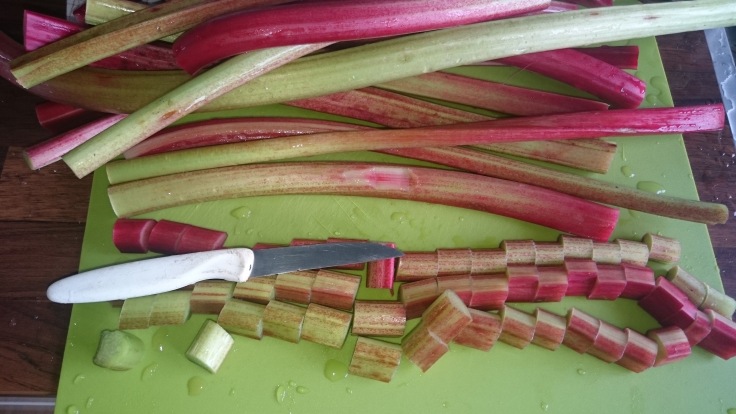It’s been a while, hasn’t it? My life has been in a bit of a roller coaster type pace for a bit. I’ve been travelling the globe to visit friends and to give aid to to the poorer people on the European continent.
Upon arriving home the weeds had had their chance to establish in the garden. The timing on my travels also meant that I have less control over the sowing and the growing of seedlings this year. How lucky I am to have some “stayers” in the garden. Trustworthy strawberries, raspberries and of course the rhubarb. The tart rhubarb has been a favourite for some time, I for one can’t remember not liking it. So this year: more than 5 kilo’s of Rhubarb harvested. Some just to chop up and end up in a rhubarb compote. Loads of that will be eating straight away. Did you try using different sweeteners? We do. Using honey, regular sugar, light brown sugar and artificial sweeteners. Adding strawberries is not something we seem very partial to. Me? I personally think it’s a waste of both. But than again, I might not have found the right balance yet.

This years crazy idea came from my moms’ earlier attempts at Rhubarb Jam. Not really a crowd pleaser: not enough sweetness for anyone but mom. SO this years experiment is called: Rhubarb Marmalade! My sister and her boyfriends family are totally in love with zucchini marmalade. So here we go with another marmalade.The original recipe came from Taste of Home. The original recipe called for as much sugar as rhubarb. As we try to reduce the sugar I used this recipe as a guideline.The other change I made was to add more orange to the jam. Omitting the amount of sugar that was called for might have been the reason that I needed to add some pectine to the marmalade. Another reason might have been that I used some prepared orange peels as mentioned in an earlier post. By doing so I had no added natural pectine from the citrus peels. But whatever you do: Make it in a way your taste buds like!
Ingredients
*10 cups Rhubarb
*5 Peels of Oranges
*2 cups Orange juice
* Pectine
* Sugar/ honey to the taste

Combine the Rhubarb, orange peels, juice and sugar in a large pot. Bring to the boil and then reduce heat to a simmer.
Simmer for about an hour. Stir occasionally.
After an hour check the gel stage of your marmalade. If not satisfied; adjust it!
Scoop into jars (use your favourite canning technique), label and enjoy!



 hey were always a bit late to really enjoy the produce.
hey were always a bit late to really enjoy the produce.



